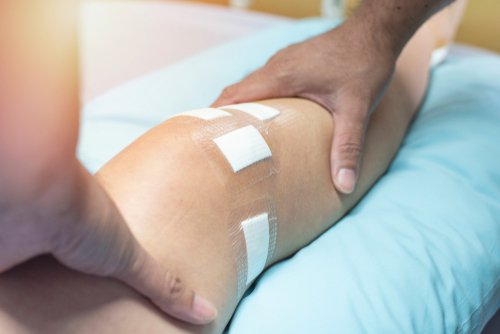 As an athlete, the most important thing to you after sustaining a severe knee injury is restoring your full function and being able to return to your sport as quickly as possible. When the cartilage in your knee has been seriously damaged (think of it like a pothole in the road), the best course of action to help you achieve your recovery goals may lie in a surgical technique known as OATS. Note, other cartilage restoration techniques are available for lesions that are not suited to OATS, typically when the lesion is very large. As we focus on the OATS procedure for this discussion, it is important to remember that cartilage restoration is not a “one size fits all” affair.
As an athlete, the most important thing to you after sustaining a severe knee injury is restoring your full function and being able to return to your sport as quickly as possible. When the cartilage in your knee has been seriously damaged (think of it like a pothole in the road), the best course of action to help you achieve your recovery goals may lie in a surgical technique known as OATS. Note, other cartilage restoration techniques are available for lesions that are not suited to OATS, typically when the lesion is very large. As we focus on the OATS procedure for this discussion, it is important to remember that cartilage restoration is not a “one size fits all” affair.
As a board-certified sports medicine specialist, Dr. Michael Rytel knows that knee surgery -- and the recovery ahead -- can be a scary prospect for an athlete who wants to get back to playing sports. In order to demystify the OATS procedure, we’ve put together some essential facts you’ll need to know if you’re considering surgery to correct the cartilage in your knees:
OATS is Just An Acronym
“OATS” is an acronym that stands for “Osteochondral Autograft Transfer System.” Let’s break that down piece by piece:
- “Osteochondral” (literally bone and cartilage) refers to the area at the end of each of your bones. This area is made up of articular cartilage (the smooth shiny white cartilage at the end of a chicken leg, for example) and the bone underlying the cartilage, which gives it support (the subchondral bone).
- “Autograft” (literally, draft from self) refers to the process during which an orthopedic sports medicine surgeon like Dr. Rytel harvests tissue from one part of your own knee in order to graft it to another area. The idea is to take the osteochondral tissue from a non-weight-bearing area and transplant it into a weight-bearing area.
- “Transfer System” refers to the process by which Dr. Rytel uses special instruments to “transfer” your tissues during the procedure.
All of these elements lay important groundwork for understanding OATS surgery as a whole -- in order to treat your osteochondral injury, healthy cartilage will be taken from one part of your knee, then it will be grafted in to replace the damaged cartilage in the affected weight-bearing area. Using cartilage from your own body is preferable, as your body is significantly more likely to accept its own tissue and allow for a successful cartilage replacement. It has its limitations, however, in that very large osteochondral defects are not suitable for this type of autograft because not enough tissue can be safely harvested.
OATS is a Minimally Invasive Technique
Like most of the surgical procedures performed by Dr. Rytel as part of his sports medicine practice, OATS employs a technique called arthroscopy in order to remain as minimally invasive as possible. During an arthroscopy procedure, Dr. Rytel will make a small incision in your affected area and insert a tiny camera known as an arthroscope. The arthroscope will project the image of your joint on a screen, which Dr. Rytel can use to diagnose your condition, determine if OATS is the appropriate surgery, and plan out your procedure. Arthroscopy allows Dr. Rytel to view the entirety of your joint without opening up your entire knee, allowing for significantly less pain and recovery time afterward.
OATS is Better Than Mosaicplasty
The OATS procedure evolved from a more traditional procedure known as mosaicplasty, which involves many of the same steps: an orthopedic surgeon removes multiple small plugs of bone and cartilage from a healthy area of a patient’s knee, then utilizes that healthy tissue to replace the damaged cartilage in the affected knee by building a sort of mosaic. However, OATS offers a superior, less invasive surgical experience that will facilitate a faster and more predictable recovery in the long run. For appropriate lesions, OATS allows Dr. Rytel to remove a larger plug(s) of healthy bone and cartilage than a traditional mosaicplasty. Fewer plugs mean a more stable construct, and fewer harvest sites necessary to fill the defect.
Most athletes who receive the OATS procedure are gradually able to return their affected joint to full function as the new, healthy cartilage grows into their knee. However, this incredible process won’t happen overnight -- you’ll need to remain diligent and complete all of the physical therapy sessions recommended to you by Dr. Rytel in order to see the full results and get back to the sport you love. Depending on your sport and your own rate of recovery, you can expect it to take 3-6 months to get back to full participation.`
Dr. Michael Rytel is highly experienced in performing OATS and other minimally-invasive, cutting-edge orthopedic procedures. If you’re struggling with knee pain following an injury, don’t hesitate to reach out or schedule an appointment online using our simple form!

